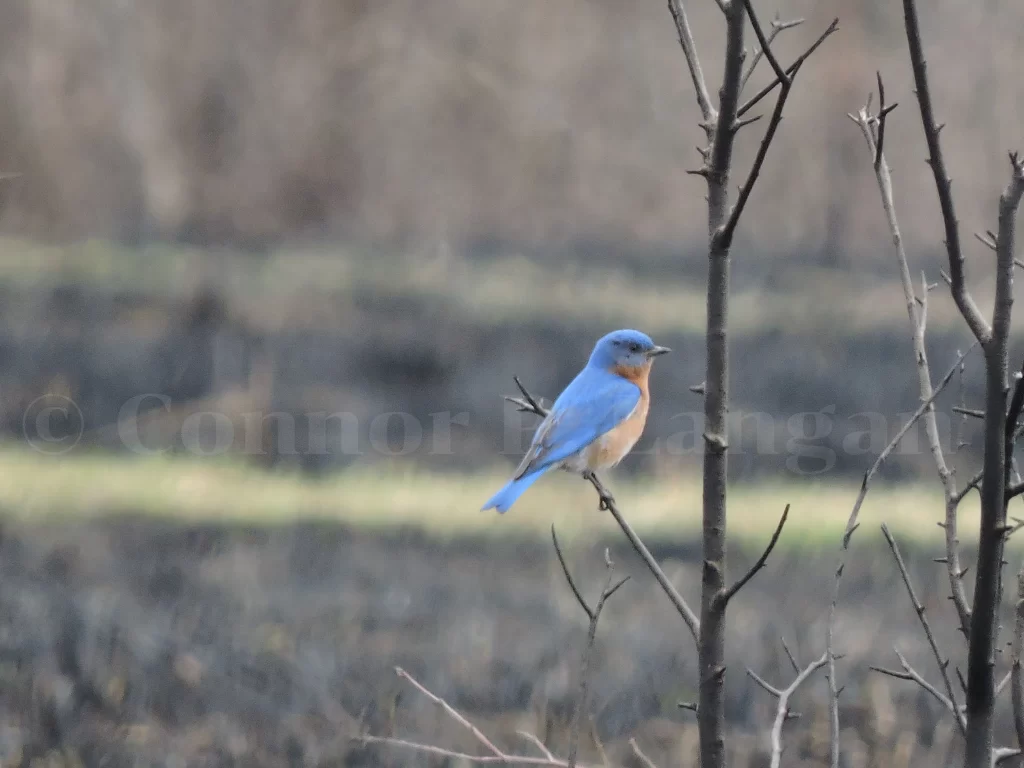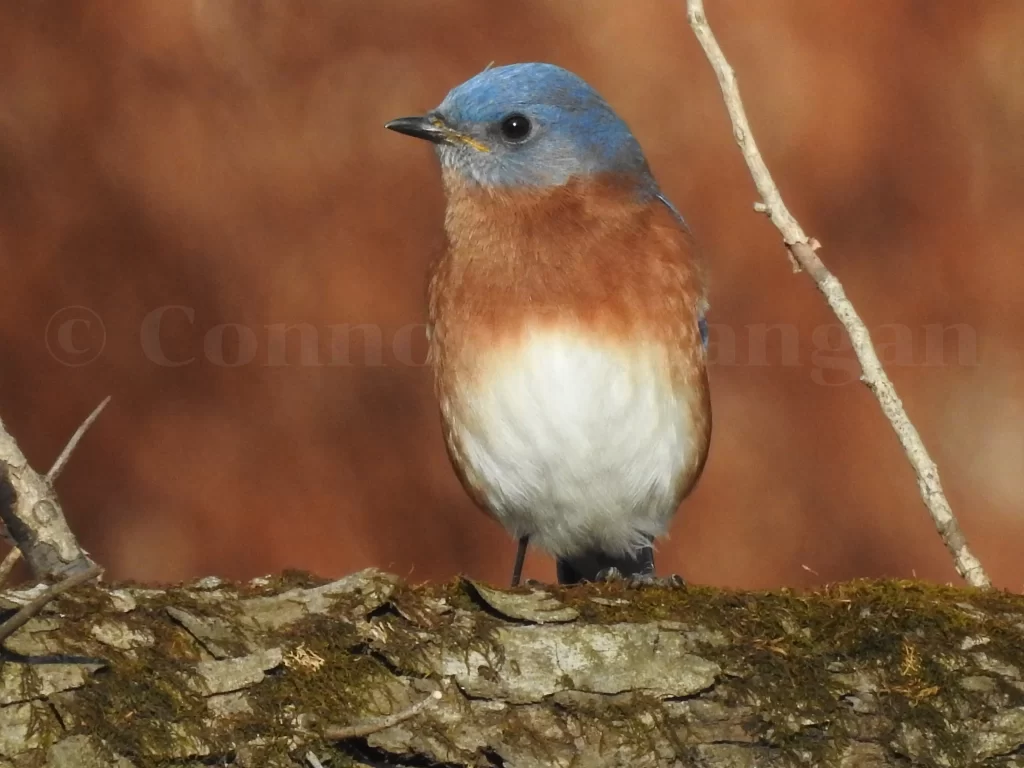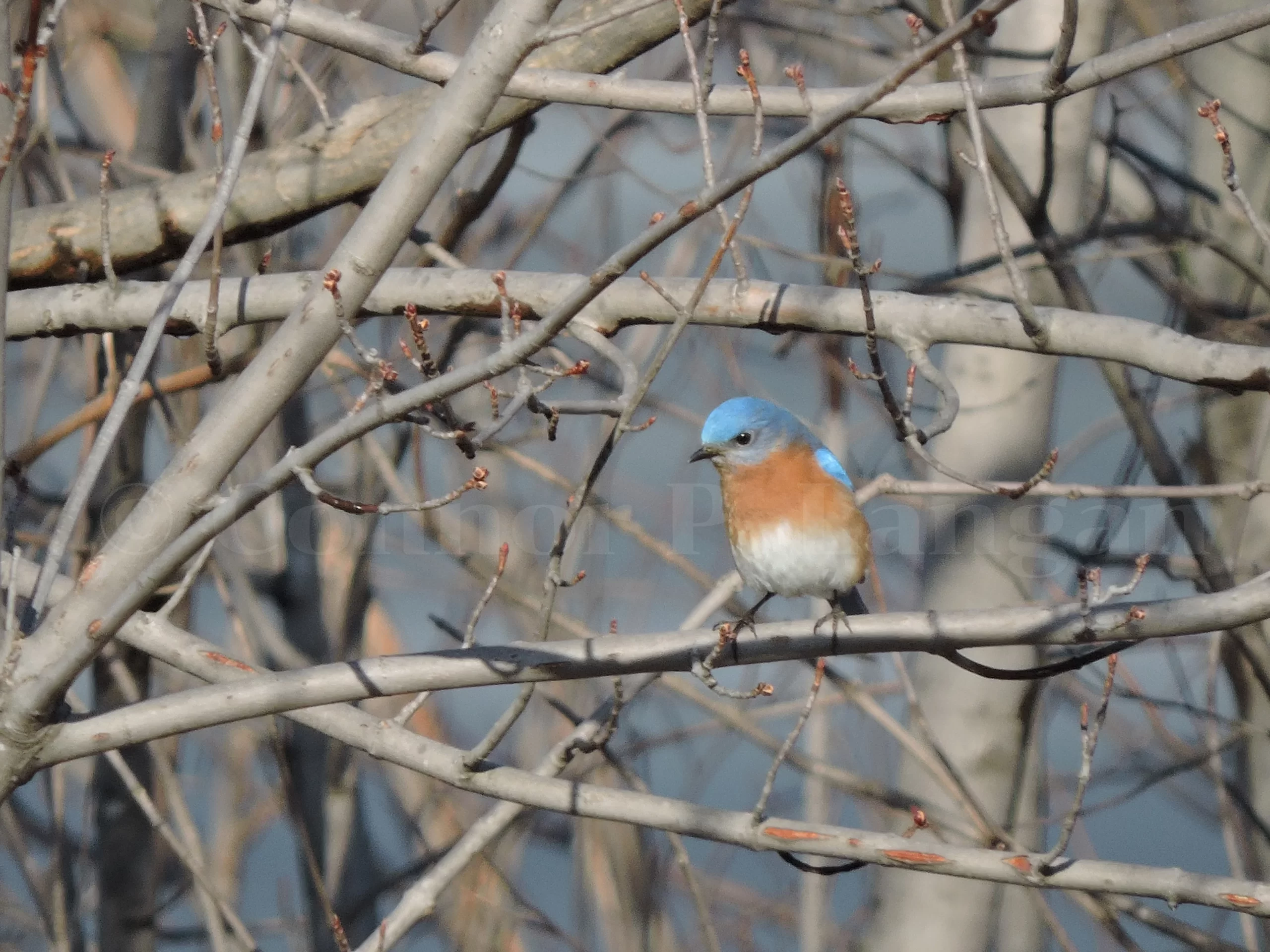Bluebirds are cheerful, sweet-looking birds that visit the backyards of many in North America, but are there bluebirds in Texas? Yes! Like their robin cousins, bluebirds are most common in Texas during winter. Many landowners are keenly aware of the presence of bluebirds on their land, but some may struggle to identify the bluebirds in Texas due to the similar appearance of the 3 Texas bluebird species in the state.
Don’t worry – I’m going to be discussing all three Texas bluebirds in detail throughout this article! Moreover, I will tell you how you can attract bluebirds to your backyards. Without further ado, let’s learn about the bluebirds in Texas!
Table of Contents
Quick Bluebird Facts:
- Bluebirds are cavity-nesting birds, meaning they readily use birdhouses for nesting
- Bluebirds have been documented eating from a variety of different bird feeders
- Birdhouses may be used by roosting bluebirds in the winter
- All Texas bluebirds tend to form groups during the winter
- Like other thrushes, bluebirds do not breed for life.
The 3 Types of Bluebirds in Texas
Eastern Bluebird
Identification
Male Eastern Bluebirds have rich, orange-colored throats, chests, and flanks, while their backs and faces are blue. Females look similar to males, but they possess comparatively duller colors. Both sexes have white stomachs and undertail coverts.
Eastern Bluebirds measure 7 inches long.
Habitat and Range
Open landscapes with scattered trees are a great place to look for Eastern Bluebirds. Therefore, parks, golf courses, pastures, fences, and backyards are often excellent places to look for an Eastern Bluebird in Texas. However, groups have also been known to seek refuge in woodlands occasionally.

Eastern Bluebirds are—go figure—more common in eastern Texas than in the western part of the state. Nevertheless, there are records of these small blue birds in far western Texas. Here, a small breeding population seemingly exists around McDonald Observatory, however, they are absent during the summer in most of western Texas. Conversely, Eastern Bluebirds in Texas are abundant in the eastern half of the state during summer. They are also prolific bluebirds in North Texas in addition to being the default bluebirds in Central Texas.
Abundance
Finding an Eastern Bluebird in Texas is quite easy, as they are the most abundant types of bluebirds in Texas, and it isn’t even close. More than 300,000 records of this species have been submitted to eBird in Texas alone, making them the most common bluebirds in winter and certainly any other season.
Mountain Bluebird
Identification
Mountain Bluebirds show the greatest disparity between males and females of any of the three bluebirds in Texas. Males are sky blue overall, having backs that tend to be darker than the undersides. Females, on the other hand, are grayish overall with blue color on the wings. Male and female Mountain Bluebirds both have white undertail coverts.
Mountain Bluebirds measure 7.25 inches long.
Habitat and Range
Mountain Bluebirds are found along scrubby hillsides with scattered trees. They won’t be found in forested locations, preferring open areas where they can pursue insects without worrying about navigating through dense vegetation.
Rarely are Mountain Bluebirds found east of the Dallas/Fort Worth Area. Instead, these Texas bluebirds are increasingly common as one gets further west. Mountain Bluebirds are winter specialties in Texas, with birds departing for more northerly locales come breeding season. Most Mountain Bluebirds have left Texas by April.
Abundance
Mountain Bluebirds are the rarest of the three types of bluebirds in Texas. Nevertheless, observing one is not too challenging provided you are in the right habitat in western Texas. Just over 5,000 Mountain Bluebirds have been observed in Texas.

Western Bluebird
Identification
Male Western Bluebirds are stunning with their deep blue heads, backs, and throats and rusty chests. In some males, the rusty color transitions to a chestnut color that displaces the blue on their backs. Females look similar to males but duller. Both male and female bluebirds have white stomachs, but the white is not as extensive as that of Eastern Bluebirds. Moreover, each sex has blue undertail coverts.
Western Bluebirds measure 7 inches long.
Habitat and Range
Western Bluebirds are more tolerant of trees on a landscape compared to Mountain Bluebirds. Therefore, they may be found in groves of juniper trees or oak savannas. However, they are also happy to forage in open areas such as parks and areas of pasture with scattered trees.
Western Bluebirds have the most restricted range of any Texas bluebird. It is rare to observe one of these creatures east of Abilene, and these blue birds in Texas are most common during the winter. However, small populations of Western Bluebirds breed around Big Bend National Park and McDonald Observatory.
Abundance
Western Bluebirds are uncommon but regular in Texas. There have been nearly 7,000 records of this bluebird in Texas.
When Do Bluebirds Nest In Texas?
Hosting a family of bluebirds on your property is sure to bring you immense amounts of joy as you watch the parents deliver food to the hungry babies. So, when do bluebirds nest in Texas?
Well, it is first important to remember that only two of the three Texas bluebirds nest in the state. Moreover, Western Bluebirds have a very limited breeding presence in Texas, so Eastern Bluebirds in Texas are the primary breeding bluebirds. These Texas bluebirds have a nesting season that can range from March through August, so it is important to have birdhouses ready for use.

Nesting in March is a rather uncommon occurrence, but pairs eager to commence breeding may have eggs laid by the end of this month. On the other end of the spectrum, bluebirds that still have eggs in the nest in August are almost certainly not on their first breeding attempt of the season.
Therefore, the Texas bluebird nesting season can be long, so landowners need to monitor birdhouses and make sure that undesirable birds like House Sparrows and starlings don’t take up residence.
How To Attract Bluebirds in Texas
Now that you know more about bluebirds in Texas, you may be itching to attract these birds to your backyard. So, how can you attract a bluebird in Texas to your property?
Well, if you want to make your backyard a bluebird-friendly location, you need to think about providing some features that bluebirds would enjoy. Asking yourself the following questions is a good place to start:
- What do bluebirds like to eat?
- When do bluebirds nest in Texas?
- Do bluebirds migrate?
Finding the answers to these questions and accommodating the preferences of bluebirds will allow you to observe these creatures in no time.
Moreover, consider adding a water feature of some sort to your yard. A simple bird bath can attract bluebirds in Texas in addition to a variety of Texas finches if placed in a yard in arid parts of the state.

